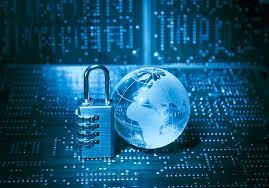This study article offers a thorough analysis of the developments in computer/digital forensics and cybercrime investigation, illuminating the present difficulties and potential prospects in this sector that are fast growing. For people, businesses, and governments worldwide, the growth of cybercrime has posed a severe challenge in recent years. The need to create and improve cybercrime investigative tools and digital forensics methodology has arisen as fraudsters use more complex strategies.

Advanced Techniques in Cybercrime Investigation
Role of Artificial Intelligence in Cybercrime Detection: Artificial intelligence (AI) plays a pivotal role in cybercrime detection by leveraging machine learning algorithms to identify patterns and anomalies in large volumes of data. This section examines the applications of AI, such as anomaly detection, network traffic analysis, and predictive modeling, in augmenting cybercrime investigations.
Behavioral Profiling and Predictive Analysis in Cybercrime Investigations: Behavioral profiling enables investigators to create profiles of potential cybercriminals based on their behavior patterns, motivations, and techniques. This subtopic explores how predictive analysis, combined with behavioral profiling, can aid in the proactive identification and prevention of cybercrime.
Open-Source Intelligence (OSINT) in Cybercrime Investigations: Open-source intelligence involves gathering information from publicly available sources to support cybercrime investigations. This section examines using OSINT techniques, including social media analysis, data scraping, and online forums monitoring, to gather evidence and identify suspects.
Digital Forensics Methods and Tools in Cybercrime Investigation:
Mobile Device Forensics: Challenges and Solutions: Mobile devices have become a prime target for cybercriminals with the widespread use of smartphones and tablets. This subtopic delves into the challenges associated with mobile device forensics, such as encryption, locked devices, and fragmented data storage. It explores the emerging solutions and tools employed to extract and analyze digital evidence from mobile devices.
Cloud Forensics: Investigating Digital Evidence in Cloud Environments: Adopting cloud computing has introduced new challenges for digital forensics investigators. This section examines the unique aspects of cloud forensics, including data jurisdiction, multi-tenancy, and remote data storage. It discusses the methodologies and tools used to acquire and analyze digital evidence in cloud environments.
Memory Forensics: Uncovering Volatile Data for Cybercrime Investigations: Memory forensics involves extracting and analyzing volatile data from a computer’s memory to uncover valuable evidence. This subtopic explores the techniques and tools used in memory forensics, such as live memory acquisition, malware detection, and artifact analysis, to aid cybercrime investigations.
Emerging Cybercrime Challenges and Solutions
Investigating Cybercrime in Hidden Networks: The darknet and using cryptocurrencies present unique challenges for investigators. This section discusses the investigation techniques and tools employed to track and trace illegal activities in hidden networks, focusing on the role of cryptocurrencies in facilitating cybercrime and money laundering.
Addressing Challenges in Connected Devices: As the Internet of Things (IoT) grows, the investigation of cybercrimes involving connected devices becomes increasingly complex. This subtopic explores the challenges associated with IoT forensics, including device heterogeneity, data fragmentation, and network analysis, and highlights the emerging methodologies and tools used to investigate IoT-related cybercrimes.
Data Privacy and Legal Implications in Cybercrime Investigations: The investigation of cybercrimes often involves collecting and analyzing vast amounts of personal data. This section examines the legal and ethical considerations surrounding data privacy in cybercrime investigations, including the challenges posed by cross-border investigations, data retention policies, and the balance between privacy rights and the need for effective law enforcement.
Future Directions and Innovations:
- Machine Learning and Big Data Analytics for Cybercrime Investigation: Machine learning and big data analytics hold immense potential to revolutionize cybercrime investigation. This subtopic explores how these technologies can be utilized to automate the detection, analysis, and response to cyber threats, thereby enhancing the efficiency and effectiveness of investigations.
- Blockchain Technology for Securing Digital Forensics Evidence: Blockchain technology offers inherent security and tamper-proof features, making it a promising solution for ensuring the integrity and authenticity of digital forensics evidence. This section discusses the applications of blockchain in preserving chain-of-custody, timestamping, and securely storing digital proof.
- Automation and Orchestration in Cybercrime Incident Response: The increasing complexity and volume of cyber threats necessitate the automation and orchestration of incident response processes. This subtopic explores the role of automation and orchestration in streamlining cybercrime incident response, enabling faster detection, containment, and mitigation of cyber threats.
In conclusion, cybercrime investigation techniques and digital forensics are vital in combating the rising tide of cyber threats. This research paper has provided a comprehensive review of the advancements in this field, encompassing topics such as AI in cybercrime detection, mobile, and cloud forensics, darknet investigations, IoT forensics, data privacy, and emerging technologies like machine learning, blockchain, and automation. By staying abreast of the latest advancements and addressing the challenges posed by cybercrime, investigators and forensic analysts can better protect individuals, organizations, and societies from the perils of the digital world.
References:
Europol. (2013). European Cybercrime Centre – EC3 | Europol. [online] Available at: https://www.europol.europa.eu/ec3
FBI (2023). Cyber Crime | Federal Bureau of Investigation. [online] Federal Bureau of Investigation. Available at: https://www.fbi.gov/investigate/cyber.
Interpol (2017). Cybercrime. [online] Interpol.int. Available at: https://www.interpol.int/en/Crimes/Cybercrime.
www.justice.gov. (2015). Computer Crime and Intellectual Property Section (CCIPS). [online] Available at: https://www.justice.gov/criminal/cybercrime





